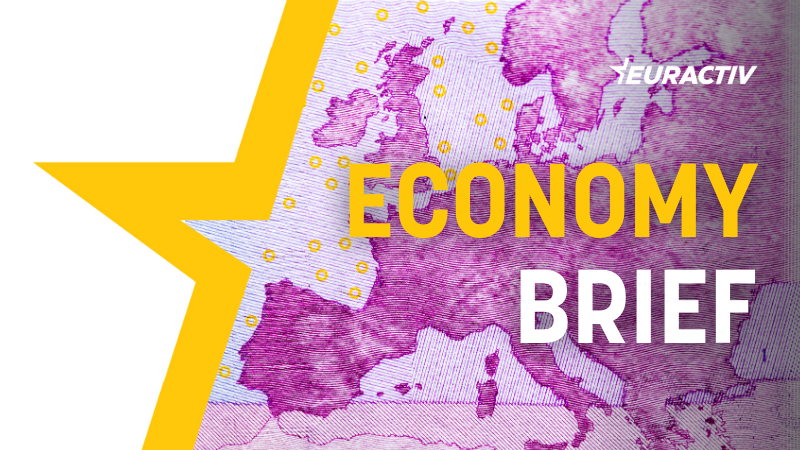Explainer: The complex fiscal rules that EU finance ministers just agreed to.

After months of negotiations, the finance ministers of EU countries on Wednesday (20 December) agreed on a new set of rules to govern member state finances, focussing on lowering budget deficits and public debt at a time when Europe requires investments for green and digital transition and defence capabilities.
The EU finance ministers met in a video call on Wednesday after French Finance Minister Bruno Le Maire and German Finance Minister Christian Lindner met to discuss a deal in person on Tuesday (19 December).
The position agreed among ministers will now have to be discussed with the Parliament, which will likely agree on a position in January.
Meanwhile, based on documents seen by Euractiv and on briefings by EU diplomats, the following has been agreed by EU finance ministers.
Individual fiscal plans
Every country will have to set out a 4-year fiscal plan together with the EU Commission. The Commission can extend this fiscal plan to seven years if a country commits to growth-enhancing reforms and investments in common EU priorities.
The plan will result in a net expenditure pathway that prescribes how much the net expenditure of a government has to be reduced per year (if it has to be reduced).
In principle, and the spirit of the original Commission proposal, the fiscal plan and the resulting net expenditure pathway should be determined by a debt sustainability analysis (DSA).
The advantage of the DSA method is that it does not only see expenditure reductions, often counterproductive, as solutions for unsustainably high debt burdens. Instead, it looks at factors like demographics and growth-enhancing reforms and investments that can strengthen the economy and thus lighten the debt burden relative to a country’s economic strength.
Numerical limits to the DSA
However, there are two limiting factors to the use of the DSA method.
First, the fiscal rules determine that after the 4- or 7-year fiscal plan should be at a maximum of 1.5% of GDP. This means that countries with a deficit between 1.5% and 3% of GDP will have to reduce their deficits no matter what the DSA method says. According to the finance ministers’ position, the yearly deficit reduction would need to be at least 0.4% of GDP for countries in a 4-year fiscal plan and at least 0.25% of GDP for countries in a 7-year fiscal plan.
Second, the fiscal rules also require a minimum debt reduction for countries with debt levels above 60% of their GDP. Countries with debt ratios between 60% and 90% must reduce their debt ratios by 0.5 percentage points annually throughout the fiscal plan. Countries with debt ratios above 90% must reduce their debt ratios by one percentage point annually.
This does not mean that the debt ratio has to fall evenly by one percentage point every year, but that a country with a 97% debt-to-GDP ratio and a 7-year fiscal plan should follow a net expenditure path that will bring it to a 90% debt to GDP ratio at the end of the 7-year fiscal plan.
Policing net expenditure
Whichever of the three criteria (DSA, deficit limit, debt limit) will result in the strictest net expenditure pathway for a specific country will be the determining criteria for that country’s fiscal plan. The adherence to the net expenditure pathway will result from applying the strictest of the three criteria to a country’s fiscal plan that the EU Commission will then police.
To do this, a “control account” will be established, registering a country’s net expenditure deviations from the agreed net expenditure pathway. If a country deviates from the net expenditure pathway by more than 0.3% of GDP in a year or by more than 0.6% of GDP cumulatively, the EU Commission will have to write a report to determine whether to open a debt-based excessive deficit procedure (EDP).
When determining this, however, recent increases in defence spending will be taken into account favourably, which puts defence in a slightly advantaged spending priority compared with other EU priorities like the green and digital transition or social goals.
Excessive Deficit Procedure
Like in the old rules, the finance ministers also want an EDP if a country has an annual deficit of above 3% of GDP, which is currently the case for many EU countries.
If a country is placed in the EDP, the net expenditure pathway of the fiscal plan does not apply anymore. Instead, the country will have to reduce its structural deficit by 0.5% of GDP yearly until it is below 3% again.
However, in a win for countries currently running high deficits, a temporary provision will hold that recent increases in borrowing costs will not be counted to the structural deficit. This gives countries like France and Italy, likely to fall into an EDP this year, a little more financial leeway in the short term.
Countries not complying with the EDP can be fined up to 0.05% of GDP. This is considerably lower than the fines that, in theory, could have been applied in the current fiscal rules framework. However, the existing possibilities to fine were never used as they were considered too draconian.
Reactions
Finance ministers sounded relieved after they had found the agreement. French Finance Minister Bruno Le Maire called it “excellent news”, and his German counterpart Christian Lindner said it would strengthen the Growth and Stability Pact.
Spanish Finance Minister Nadia Calviño, who chaired the negotiations, gushed that it would guarantee the reduction of debt levels in Europe while ensuring more flexibility to investments and Dutch Finance Minister Sigrid Kaag said she was happy, calling the result a good agreement.
An EU diplomat told journalists, “It’s a much more economically sound and robust system than before.”
However, the ineffective and counterproductive rules of the past are a low bar to pass. Moreover, as the EU Commission stressed, the green transition alone will require additional annual investments of over €700 billion.
It is entirely unclear how the EU should invest these €700 billion additionally every year while trying to reduce debt and bring deficits down.

The prophets of fake scarcity
As finance ministers meet in Brussels to finalise a deal on the EU’s fiscal rules, Europe’s only hope is that they stop listening to the prophets of fake scarcity and allow more flexibility for investments.
Read more with Euractiv




